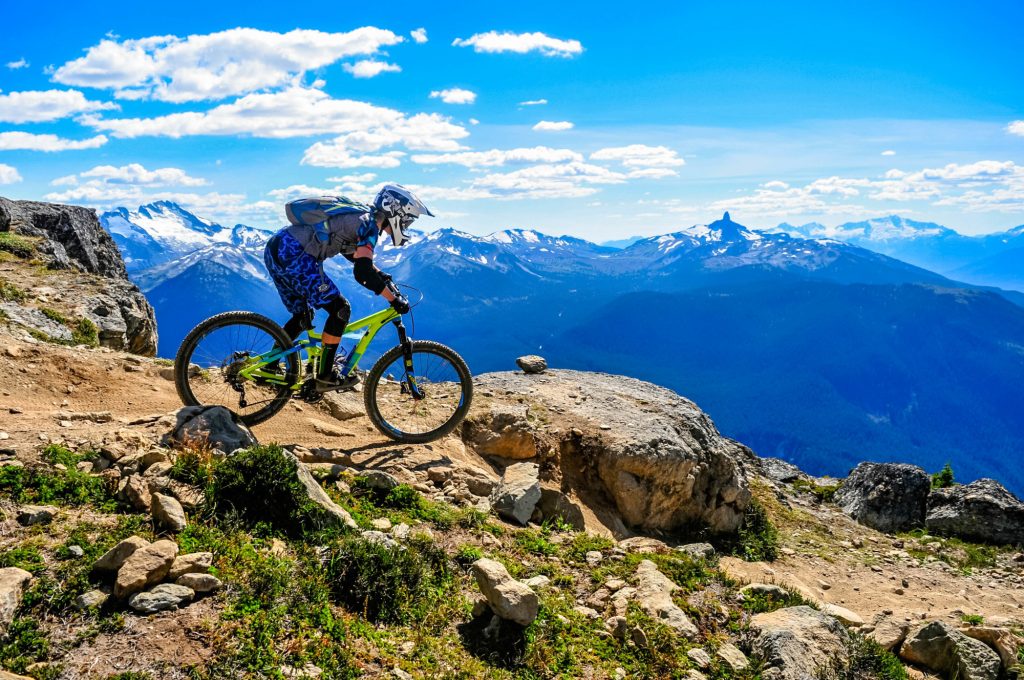9 Mountain Biking Tips for Beginners to Get a Head Start
Are you new to mountain biking? Developing basic mountain biking skills and techniques can be intimidating, but it doesn’t have to be an uphill challenge. With these mountain biking tips for beginners, you can take on the trail with confidence.
Without further ado, let’s explore some of the best tricks for mastering your biking. Even if you’ve never taken your bike out on a trail, you could benefit from the following pieces of advice. Let’s get started.
1. Bring Water
Though you may be planning for a short, uneventful bike ride, it’s essential to bring water. Accidents happen and mountain bikers aren’t immune to getting lost when visiting nature parks.
If you end up exerting more energy than you initially planned, or you become lost, you’ll be glad that you brought water along for the ride. Clean water can help you replenish your fluid levels, especially after breaking a sweat.
You’ll also want to drink plenty of water before hitting the trails. It takes time for your body to absorb the water you drink, and if you consume too much water before exercising, you may feel nauseous.
Hydration is imperative to an enjoyable bike ride. But so is owning the right-sized bike.
2. Buy the Right-Sized Bike
If you don’t have the right-sized bike, you may struggle to enjoy your rides. Bicycles that are too large can be impossible to control, and smaller models can be equally unsatisfying.
Familiarize yourself with the fitting basics before you invest in a new bike. Otherwise, you may find yourself wondering why your bike rides are so difficult or uncomfortable.
3. Learn How to Use Your Gears
Are you familiar with your gears? If not, you may be missing out on an enjoyable mountain biking experience. While higher gears can help you find the traction you need to make it up sharp inclines, it’s important to gauge your trail.
If you have a long uphill slog ahead of you, you may want to opt for a slightly lower gear that produces less friction to overcome. However, exceptionally low gears could prove pointless and ineffective.
Feel free to experiment with your gears as you find what works for you. Patience is an integral part of the learning process.
4. Start Slowly
Don’t pressure yourself to conquer the most challenging trails, at least not at first. Becoming an experienced cyclist requires, well, experience.
Whenever you’re feeling impatient, remind yourself that patience is a crucial ingredient in becoming better at mountain cycling. You don’t have to conquer the world in one or two days or weeks.
Besides, overdoing it can result in sore, sprained muscles. Cyclists who get lost while attempting to navigate unfamiliar trails may wear themselves out trying to find the main path.
5. Bring a Map
An accordion map printing could be the ideal solution for tight spaces and restricted backpack availability. Many accordion fold-out maps are created of waterproof, tear-resistant plasticized papers that help extend the life of the map.
This means that you can shove your map into the tightest, most-restricted space and still be able to safely retrieve it later when you need it. Though you may be familiar with your chosen bike path, accidents do happen.
If you have a map and a compass with you at all times, you’re more likely to find help and be rescued during an emergency.
6. Wear Breathable Clothing
The last thing you want to deal with while biking is tight, restrictive clothing. If you’re not wearing breathable digs, you can expect to experience some amount of chafing.
While skin irritation isn’t the end of the world, it can detract from an otherwise enjoyable rise. That’s why it’s vital to wear clothing the allows your skin to breathe and minimizes chafing.
Tight-fitting athletic clothes can work, but so can a loose t-shirt and a comfy pair of cargo shorts. When you’re starting, it’s more important to be comfortable than it is to be fast.
7. Prepare for the Worst
One of the best habits you can develop while learning how to mountain bike is proper safety preparation. Though you may have a sturdy helmet, some water, and a map, this isn’t always enough to keep you safe.
Preparing for the worst means packing an emergency bag that you have on you at all times. Small backpacks with chest straps tend to work well for this purpose. There are quite a few items you’ll want to store in your crisis bag, including:
- Enough cash to hire a taxi home
- A compact first aid kit
- An emergency cell phone battery charger
- A solar-powered USB battery charger
- A flashlight
- A rugged waterproof case for electronics
- An extra pair of socks and shoes
You may also want to pack a few snacks. Wholesome energy bars and trail mixes can provide the energy you need to survive even the toughest unexpected situations. However, it’s also imperative to go biking without headphones.
8. Avoid Wearing Headphones
While listening to music while biking can be a lot of fun, it can also be dangerous. We use all of our senses to detect potential threats, and hearing is a major source of warning.
If you’re wearing headphones while biking, you may not hear the sound of oncoming traffic or a cry for help. You may miss a warning cry from a nearby cyclist and end up finding yourself in sudden danger.
You can still listen to music while you bike, but you may want to use a waterproof Bluetooth speaker instead of a pair of noise-isolating headphones. Why waterproof? Unless you’ve checked the weather, you may encounter unexpected rainfall.
9. Check the Weather
You may want to develop the habit of checking the day’s weather in the morning. Not only will this help you remember to bring an umbrella with you on potentially rainy days, but you can also avoid challenging rain-drenched trails.
While advanced or experienced mountain bikers may enjoy the rain, beginners can struggle to deal with the muddy conditions it produces. Additionally, some trails have steep declines that can flood during rainfall.
If you haven’t checked the weather before setting out to ride, you may find yourself unpleasantly surprised when you arrive. Always take a few extra moments to check the weather before you pack up your bike and head out.
Enjoy These Mountain Biking Tips for Beginners
There are several things you can do to make your mountain biking experience safer and more enjoyable. Bringing an accordion map, being sure to stay hydrated, and learning how to use the right gears can all help.
Hopefully, these mountain biking tips for beginners have helped you to feel more confident about beginning your bicycling journey. If you enjoyed this article, then be sure to check out our educational and self-improvement articles now!





